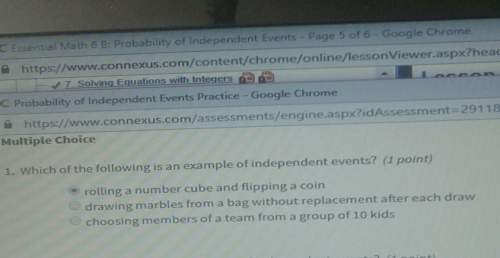
Mathematics, 05.05.2021 07:30 masontdavis
An animal's weight is proportional to its volume. The strength in its legs to support its weight is proportional to their cross-sectional area. Imagine magnifying a mouse to the size of an elephant. If its length is multiplied by 65, and its density and proportions stay the same, what are the multipliers for its weight and the cross-sectional areas for its legs? Would a mouse this size be able to support itself? Complete the explanation. The ratio of leg cross-section to weight has been reduced by a factor of . The mouse (would not/ would) be able to support itself.

Answers: 2


Another question on Mathematics

Mathematics, 21.06.2019 17:10
How many lines can be drawn through points j and k? 0 1 2 3
Answers: 2

Mathematics, 21.06.2019 19:00
Ab based on the given diagram, if m_1 = 60° then m 2 = 30 60 90 180
Answers: 1

Mathematics, 21.06.2019 20:40
Sh what is the value of x? ox= 2.25 x = 11.25 ox= x = 22 1 (2x + 10) seo - (6x + 1) -- nie
Answers: 3

Mathematics, 21.06.2019 21:00
The radius of a sphere is 3 inches. which represents the volume of the sphere?
Answers: 1
You know the right answer?
An animal's weight is proportional to its volume. The strength in its legs to support its weight is...
Questions


Mathematics, 19.04.2021 01:00

Mathematics, 19.04.2021 01:00


Biology, 19.04.2021 01:00


Mathematics, 19.04.2021 01:00

Mathematics, 19.04.2021 01:00





Mathematics, 19.04.2021 01:00



Mathematics, 19.04.2021 01:00

Physics, 19.04.2021 01:00







